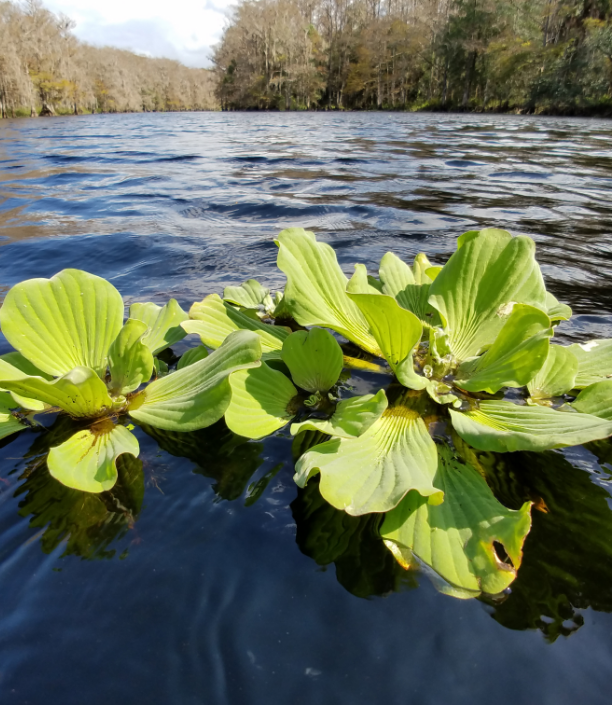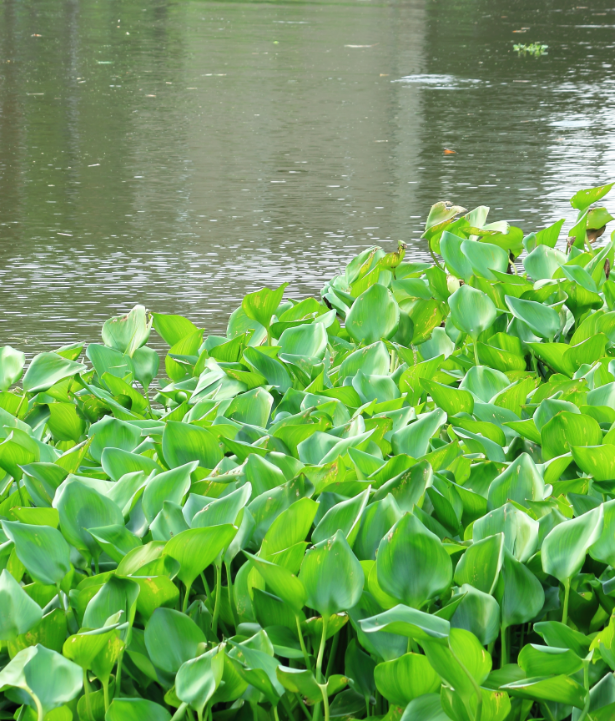Education
Non-Natives
education
Non-Natives
Florida is known for lush, jungle-like landscapes that feature exotic plants and colorful blooms year-round. But it’s important to note that not all plants are good plants. In fact, Florida’s ecosystems are plagued by hundreds of invasive plant species that can cause serious problems for native plants and wildlife. Some plants can’t adapt to their new surroundings, so they die off. But many new plants love it here — they go to seed and start to spread. From the farms or yards where they were first planted, they spread and spread, invading new territory and taking over places where native plants aren’t used to competing with them.
JUST SOME OF FLORIDA’S INVASIVES
Hydrilla- Hydrilla entered the ecosystem through the aquarium trade. Well intentioned people released the contents of their no longer wanted aquariums into freshwater and the rest is history. Hydrilla is a prolific threat to native aquatic ecosystems. Dense mats shade out native aquatic vegetation and alter the ecology of the water body. Invasion also interferes with recreational activities like boating and fishing.
Water Lettuce- This freshwater perennial creates thick mats that reduce oxygen levels, block sunlight, and prevent growth of submerged vegetation. Mats interfere with recreation and can have a negative effect on fish and other aquatic species in an infested area.
Hyacinth- This invasive species forms dense colonies in water bodies that block sunlight and crowd out native species. At optimum temperatures, it can double its biomass within a month. Dense colonization can also impede boat traffic, reduce water flow, and interfere with hydroelectric power generation.
Water Primrose- Likely brought to the U.S. as an ornamental plant. It now ranges from New York to Florida, west to Texas, and along the west coast. Primrose produces abundant seeds and will also reproduce by fragmentation. Dense patches of water primrose provide breeding areas for mosquitoes and will degrade both water quality and habitat for fish and wildlife. It fouls intakes used to supply municipal drinking water and irrigation and becomes a navigation hazard.
West Indian Marsh Grass- This invasive species is present in at least 14 counties of central and south Florida. This perennial grass species out-competes native vegetation and is capable of rapidly spreading by both seeds and vegetative tissue. This invasive is EXTREMELY difficult to control with herbicides.


Brazilian Pepper- Brazilian pepper is now considered one of the most invasive species in the state. It grows next to water and crowds out mangroves and other native plants but doesn’t provide the same high-quality habitat.
Cogon Grass- This sharp, hairy character is considered one of the world’s worst weeds. It first invaded the U.S. as packing material in produce crates. It was also purposely planted in Florida to see if cattle would graze on it; they didn’t, and now it invades our fields and roadsides.
Melaleuca- Sometimes called “paperbark trees,” melaleuca trees like water but they can live in dry or wet areas. They grow to about 80 feet tall and draw the water from the soil. They don’t like the cold and are more of a problem in southern Florida, where they have invaded hundreds of thousands of acres in the Everglades.
Australian Pine- These trees were widely planted to soak up the “swamps” in Florida, stabilize canals, and hold beaches. Unfortunately for Florida’s ecosystems, the “pines” accomplished all this and more–like seeding prolifically, growing five feet or more per year, producing dense shade, and emitting an herbicide that kills most any other plants that grow within their collective drip lines. When things get windy, instead of stabilizing the beach, they blow over. This can destroy nesting sites for sea turtles and gopher tortoises.
Skunk Vine- This vine grows in upland areas but can live in the water and even high up in trees. It was introduced from Asia in 1897 and really does smell skunky.
ID Non-Native Plants Through The University Of Florida’s Center For Invasive And Aquatic Plants Website
